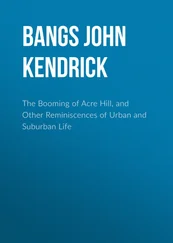Nicholson Baker - The Size of Thoughts - Essays and Other Lumber
Здесь есть возможность читать онлайн «Nicholson Baker - The Size of Thoughts - Essays and Other Lumber» весь текст электронной книги совершенно бесплатно (целиком полную версию без сокращений). В некоторых случаях можно слушать аудио, скачать через торрент в формате fb2 и присутствует краткое содержание. Год выпуска: 1997, Издательство: Vintage, Жанр: Публицистика, Критика, на английском языке. Описание произведения, (предисловие) а так же отзывы посетителей доступны на портале библиотеки ЛибКат.
- Название:The Size of Thoughts: Essays and Other Lumber
- Автор:
- Издательство:Vintage
- Жанр:
- Год:1997
- ISBN:нет данных
- Рейтинг книги:4 / 5. Голосов: 1
-
Избранное:Добавить в избранное
- Отзывы:
-
Ваша оценка:
- 80
- 1
- 2
- 3
- 4
- 5
The Size of Thoughts: Essays and Other Lumber: краткое содержание, описание и аннотация
Предлагаем к чтению аннотацию, описание, краткое содержание или предисловие (зависит от того, что написал сам автор книги «The Size of Thoughts: Essays and Other Lumber»). Если вы не нашли необходимую информацию о книге — напишите в комментариях, мы постараемся отыскать её.
The Size of Thoughts: Essays and Other Lumber — читать онлайн бесплатно полную книгу (весь текст) целиком
Ниже представлен текст книги, разбитый по страницам. Система сохранения места последней прочитанной страницы, позволяет с удобством читать онлайн бесплатно книгу «The Size of Thoughts: Essays and Other Lumber», без необходимости каждый раз заново искать на чём Вы остановились. Поставьте закладку, и сможете в любой момент перейти на страницу, на которой закончили чтение.
Интервал:
Закладка:
(1983)
Rarity
Has anyone yet said publicly how nice it is to write on rubber with a ballpoint pen? The slow, fat, ink-rich line, rolled over a surface at once dense and yielding, makes for a multidimensional experience no single sheet of paper can offer. Right now dozens of Americans are making repetitive scrolly designs on the soft white door-seals of their refrigerators, or they are directing their pens around the layered side-steppes and toe-bulbs of their sneakers (heads bent, as elders give them advice), or they are marking shiny initials on one of those gigantic, dumb, benevolent erasers (which always bounce in unforeseen directions when dropped, and seem so selfless, so apolitical, so completely uninterested in doing anything besides erasing large mistakes for which they were not responsible), and then using the eraser to print these same initials several times, backward, on a knee or forearm, in a fading progression. These are rare pleasures.
And then someone mentions several kinds of rubber penmanship in his opening paragraph. Has a useful service been performed? A few readers, remembering that they did once enjoy taking down a toll-free phone number on the blade of a clean Rubbermaid spatula, react with guarded agreement: “Yes, I guess I am one of those not-so-uncommon people who have had that sort of rare experience.” Infrequent events in the lives of total strangers are now linked; but the pleasure itself is too fragile, too incidental, to survive such forced affiliation undamaged. Regrettably, multiplying the idea of a thing’s rarity is nearly identical in effect to multiplying the thing itself: its rarity departs. Some readers may never again engage so unthinkingly in this particular strain of idleness. It is no more common than it was before I brought it up, but it is more commonplace.
Rarity, then, is an emotion as much as it is a statistical truth. Just say the word over to yourself: Rare. O rarer than rare . A long, piercing curve of light appears and fades in one’s darkened memory. It’s like that diminishing cry of cartoon characters when they are tricked into running off a cliff. The rare book room. A rare disease. Rarefied air. A miracle of rare device . Comprehended in the notion are all sorts of contributory pangs: brevity, chances barely missed, awe, the passing of great men and glorious eras. Frequency is a sudden movement of many wings, a riffle through a worn paperback; rarity holds the single hushing index finger raised. And yet the absolute number of “raremes” is enormous — too large, in fact, for us to give each one of them the rapt monocular attention it deserves. Not only are there priceless misstamped nickels, oddball aurora borealises hanging their ball-gowns over unpopulated areas, fraternal bananas enclosed in a single skin, holes-in-one, and authentic Georges de La Tours; there are also all the varied sorts of human talent and permutations of character: the master mimic of frog sounds, the memory prodigy, the man who can mix wit with sympathy. The universe of rares is surprisingly crowded, and yet it is somehow capable of holding its inmates in seeming isolation, each of them floating in a radiantly placental, fluid-filled sphere of amazement, miles from any neighbor.
But there is ferment, too, in this universe. The turnover rate is very high. One disk jockey, in a fit of inspiration, will substitute colder in the shrubs for colder in the suburbs , or T-storms for thunderstorms; within two weeks every keen-eared DJ in the country is in step, and these phrases, cooling quickly, are soon remaindered to lesser microphones. Forgotten commonplaces rare up their heads, and soiled rarities are tossed back into the commonplace, twenty-four hours a day, in processes as inevitable as the cycles of rain and evaporation. But in this churning lies our perplexity. Since rarity constitutes part of the pleasure we take in many of the things we value, how rare should we allow a rareme to remain when it is in our power to influence its frequency?
Maybe good ideas should supplant bad ones without the resistance of prejudice or habit; maybe inside information should become public knowledge with the shortest possible delay. We act as if it should. Automatic mechanisms are in place for the efficient display of any hidden gem — a clever household hint, a new theory, a patent, a fairly good poem. Seed money is everywhere. Venture capitalists, those sleepless invigilators, roam the laboratories for the tiniest tremor of a possibility, force-feed it ten million dollars, pump it up, bring it public, and move on. Grants committees and arts competitions chew through the applicant pools, funding anything that moves. Contrarians trample one another to buy unfashionable stocks. “New and Noteworthy” columns take any gruntling of an innovation and give it a paragraph, a title with a pun in it, and a close-cropped picture. We are chastened by past mistakes: Mendel died ignored; Brahms was hissed; Harvey’s patients dropped him when he came out with The Circulation of the Blood . This kind of embarrassment must not happen in our lifetime!
At times it’s fun to be part of a society so intent on institutionalizing its response to novelty. Our toes are curled right around the leading edge of the surfboard. Nothing far out will catch us off guard. We will monitor left field continually, and no hint of activity from that quarter will elude our scrutiny.
But there are ill-effects, nervous tics, symptoms of exhaustion, that arise in an audience when it oversolicits the heteroclite. Newness ought to suffer a period of frost — it should even have to submit, for its own good, to entrenched and outraged resistance. Neglect gives a winsome oddity more time to perform important tests on itself; widespread narrow-mindedness shelters surprise. No one will blame a publisher who has discovered an out-of-print minor masterpiece and feels it his duty to enrich and uplift the human spirit by publishing it in paperback, with a beautiful, spare, up-to-the-minute cover design. That is his job. But sometimes we can’t help wishing he would wait, and just buy one old copy for himself from an antiquarian dealer, preserving for at least a few more years the delight of private, proprietary knowledge, the ecstasy of arriving at something underappreciated at the end of a briareous ramification of footnotes, since the hope of such secrets is one of the things that keep us reading.
Rough timetables, “appreciation schedules,” may be of some guidance. That pad dotted on both sides with suction cups, to which you can vertically affix a wet bar of soap while you are in the shower? It should remain unmentioned by any magazine’s “New and Noteworthy” column for six months. Each of us should have a fair chance of finding it, hanging unheralded from a hook in the hardware store, on our own. A good poem, as Horace suggested, ought to have a nine-year news blackout. And a major leisure item — a new sort of inflatable raft, for example — deserves at least five summers of quiet superiority before it gets a Best Buy rating from Consumer Reports and leans against the wall in the sporting-goods department at the high-volume discounters. After all, this successful raft — with its revolutionary osmotic inflater-valve — displaces several other very good makes of raft, which once so proudly rode the crest; and when we look through the still-hopeful catalogs of these inferior raft-crafters, and sense their anguish, deepening monthly, as they watch their sales go into steep decline, then they begin to take on rarity — the rarity of the underdog, one of the most seductive kinds — and we discover ourselves feeling, too soon, that we must root for the second-rate product. (Haven’t you felt a peculiar sort of worry about the chair in your living room that no one sits in? Haven’t you sometimes felt sleeve-tugs of compassion and guilt over an article of clothing that you dislike and therefore scarcely wear? Haven’t you at least once secretly sat down in the hardly-sat-in chair, wearing that ugly shirt, in order to rectify these inequities?) A little lengthening of the time it takes for new merit to out, for rare proficiencies to make their sudden bundle, would allow our sympathy for the underdog and our excitement in superiority to coincide; too rapid a transmittal of the knowledge of relative greatness, on the other hand, eliminates that beautiful period when these emotions overlap.
Читать дальшеИнтервал:
Закладка:
Похожие книги на «The Size of Thoughts: Essays and Other Lumber»
Представляем Вашему вниманию похожие книги на «The Size of Thoughts: Essays and Other Lumber» списком для выбора. Мы отобрали схожую по названию и смыслу литературу в надежде предоставить читателям больше вариантов отыскать новые, интересные, ещё непрочитанные произведения.
Обсуждение, отзывы о книге «The Size of Thoughts: Essays and Other Lumber» и просто собственные мнения читателей. Оставьте ваши комментарии, напишите, что Вы думаете о произведении, его смысле или главных героях. Укажите что конкретно понравилось, а что нет, и почему Вы так считаете.












